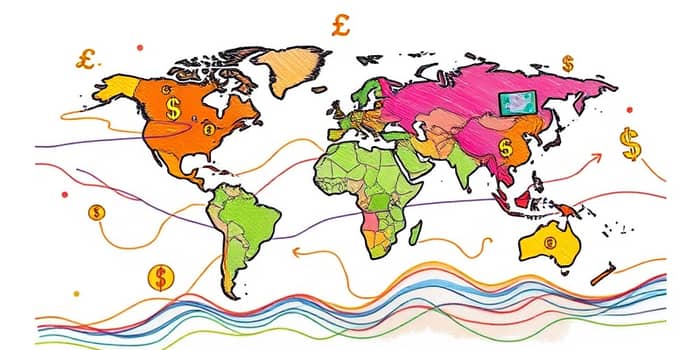
As global markets evolve in Q2 2025, shifts in currency values are rewriting the rules of trade. Businesses, investors, and policymakers must understand the intertwined effects of tariffs, monetary policy, and exchange rates to navigate an increasingly complex landscape.
After a robust 7% gain in 2024, the US dollar index (DXY) peaked in September before displaying signs of weakness. Early 2025 saw tariff announcements and central bank actions drive volatility. The euro surged to its highest level since 2021, while the yen and Swiss franc strengthened as investors sought safe havens.
Major shifts reflect escalating trade policy uncertainty and rapid market adjustments. Understanding these developments helps stakeholders anticipate future trends and hedge effectively against currency risk.
In April 2025, the US imposed steep tariffs: up to 145% on China (later dialed back to 30%), 20% on Europe, and 24% on Japan. Canada and Mexico faced targeted tariffs as well. These measures triggered immediate depreciation of the dollar, as partners retaliated with their own trade barriers.
The market’s swift reaction underscores the interconnected nature of global finance, where policy shifts ripple across currencies and asset classes within hours.
Monetary policy plays a pivotal role in exchange-rate dynamics. The Federal Reserve’s cautious outlook suggests only a 44 basis-point easing over the next year, compared to 110 basis points of cuts by the European Central Bank and a 47 basis-point rate hike by the Bank of Japan.
Goldman Sachs forecasts a 10% decline in the dollar versus the euro and roughly 9% against the yen and pound sterling over the next 12 months. These projections reflect anticipated rate differentials and the impact of ongoing trade tensions on capital flows.
A strong dollar can be a double-edged sword. While US consumers benefit from cheap imports, exporters face stiffer competition abroad. Conversely, a weakening dollar makes American goods more affordable globally and softens the blow of high tariffs on foreign sellers through currency depreciation.
Trade policy shocks amplify these dynamics, as businesses adjust pricing strategies and supply chain configurations in response to shifting exchange rates.
High tariffs and currency swings have prompted firms to rethink production footprints. Many are pursuing reshape global supply networks by diversifying manufacturing locations or reshoring critical operations. This trend accelerates regional realignments and fosters resilience against future policy shocks.
Cross-border investment has also shifted. A strong dollar tends to dampen foreign acquisitions of US real estate and equities, while enticed by lower asset prices abroad, American firms and investors increasingly seek opportunities overseas.
European exporters of cars, machinery, and wine face reduced competitiveness in the US market, pressured by tariffs and currency headwinds. Japanese automakers and electronics companies likewise contend with higher US duties, though a strengthened yen offers some offset.
China’s managed yuan has remained relatively stable, insulating exporters from direct exchange-rate jolts but leaving them vulnerable to tariff volatility. Across regions, the constant recalibration of trade costs is driving supply chain innovation and strategic partnerships.
Declining confidence in the dollar’s trajectory has led global investors to diversify into yen, Swiss franc, and euro-denominated assets. Safe-haven flows and shifting reserve allocations reflect a broader reassessment of US financial leadership and alliance dynamics.
This evolving sentiment underscores the importance of proactive currency management. Firms and funds increasingly deploy hedging strategies to protect profit margins and portfolio values against unexpected rate moves.
In an era defined by rapid currency-driven adjustments and elevated trade barriers, agility is paramount. Companies should monitor monetary policy announcements, tariff developments, and economic indicators to anticipate currency trends.
By embracing strategic planning and flexible operations, businesses and investors can thrive amid the dynamic interplay of currency strength and global trade in Q2 2025.
References













